Brisbane isn’t just about riverside skylines and sunlit ferris wheels—it’s about the quiet cafés tucked in corners, the secret trails that end in views you didn’t expect, and the places only locals whisper about. These hidden Brisbane gems capture the heart of the city in a way the guidebooks rarely do.
Whether you’re a first-time visitor looking to dodge the crowds or a local ready to rediscover your hometown, these underrated spots deliver the kind of charm that sticks with you. And although they’re not always marked with signs, these local favourites are worth the detour.
So, if you’re curious enough to explore beyond the obvious, this guide will take you through Brisbane’s best-kept secrets—each one a little story waiting to be discovered.
Why Locals Seek Out These Hidden Spots
Everyone loves a good secret. While South Bank and Story Bridge draw crowds, locals often escape to places that feel more personal, peaceful, or just plain different. Whether it’s for a quiet morning coffee, a spontaneous sunset view, or a quirky weekend adventure—hidden Brisbane gems offer fresh takes on this sunny, riverfront city.
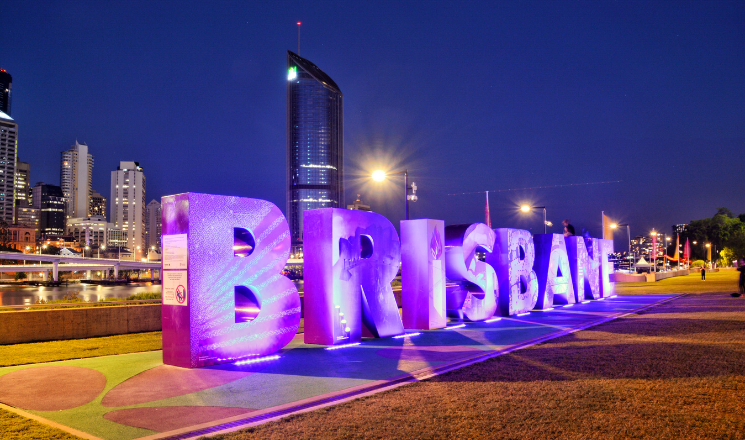
These local favourites come without the hustle, but still with all the heart. So where exactly do the locals go when they want to unplug or see their city from a new angle? Let’s dive in.
Stroll Through the Tranquil Roma Street Parkland
You might think gardens are only for tourists, but Roma Street Parkland is actually a local retreat. Set just a few minutes from the city center, it’s a peaceful green haven with rainforest trails, flower gardens, and grassy hills perfect for lazy afternoons.

What makes it truly unique is how it blends manicured beauty with wild nature. So, locals often bring a book, some snacks, and simply let the hours melt away.
Local tip: Arrive early to catch sunrise over the lake. That way, you’ll spot joggers, bush turkeys, and the city slowly waking up.
Unwind at the Secret Lookout on Bartley’s Hill
Sure, Mt Coot-tha is a classic. However, Bartley’s Hill Lookout is a lesser-known gem. Tucked inside Hamilton’s hilly streets, it offers sweeping skyline views without the crowds or tourist buses.
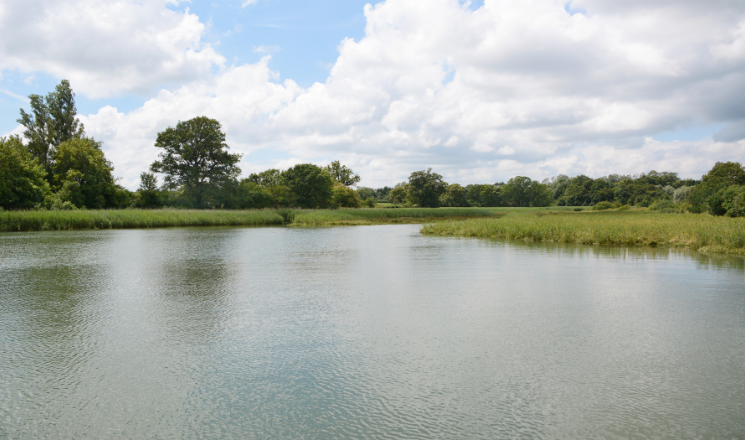
Locals often come here for peaceful sunsets, spontaneous picnics, or quiet contemplation. The space is small, yet the view? Completely unforgettable.
So, bring your favourite snacks, a blanket, and enjoy one of the most relaxing panoramas Brisbane has to offer.
Find Artistic Vibes at Bakery Lane
Hidden in Fortitude Valley, Bakery Lane is Brisbane’s answer to Melbourne’s laneway culture. Full of independent boutiques, street art, and quirky eateries, it’s a vibrant space that oozes creativity.

You’ll find students sketching, musicians busking, and locals sipping oat lattes from hole-in-the-wall cafés.
What makes it special is the feeling of discovery—you never quite know what you’ll find around the corner.
Chill Along the Riverside at Orleigh Park
Looking for a breezy riverside escape? Orleigh Park in West End is where locals unwind beneath massive fig trees while kids climb playgrounds and dogs trot past.

You won’t find loud crowds here—just hammocks, relaxed chats, and micro-cafés on nearby streets. It’s a slice of Brisbane that feels unfiltered, authentic, and warm.
Explore Culture at Queensland Maritime Museum
Tucked beneath the Goodwill Bridge, the Queensland Maritime Museum is often missed by visitors—but beloved by locals with curious minds.

Here, you can climb aboard historic ships, explore the dry dock, and learn about Brisbane’s deep ties to the sea. Not only is it hands-on and quiet, but it’s also surprisingly fun for families or solo wanderers alike.
Moreover, it’s not your typical museum vibe—it’s personal, interactive, and filled with stories you probably haven’t heard. So, if you’re looking for something offbeat and meaningful, this spot absolutely delivers.
Step Back in Time at Newstead House
Want history without the heavy crowds? Newstead House is one of Brisbane’s oldest homes, set inside a lush garden overlooking the river.
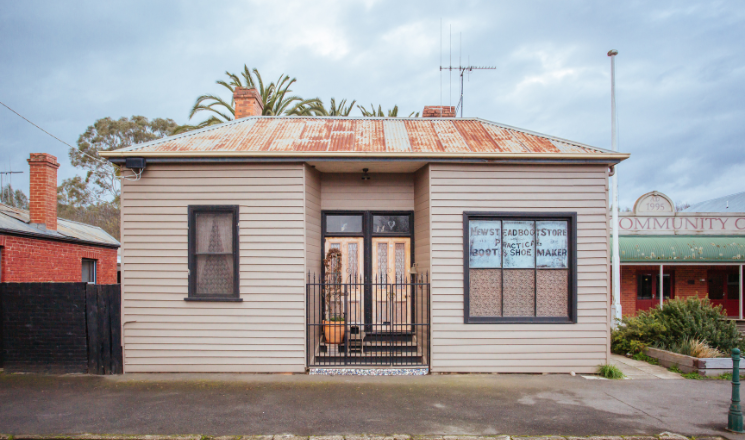
Locals come here to picnic, take photos, or simply enjoy the stillness. Although it’s a historic site, it never feels stuffy or overdone.
In fact, there’s something nostalgic and grounding about this place—it’s a quiet reminder of where Brisbane came from. And even if history isn’t your thing, just being in that space, surrounded by trees and river views, is refreshingly peaceful.
Sip in Style at The Laneway
Behind Mary Street’s popular restaurant The Euro lies The Laneway, a stylish, intimate bar locals treat like a well-kept secret.

This place does not shout. It hums—soft lighting, inventive drinks, and quiet energy perfect for good conversation or a relaxed solo evening.
It’s one of those gems you stumble on once, then return to again and again.
Discover Wildlife at Downfall Creek Bushland Centre
Tucked away in Chermside, Downfall Creek is a surprise slice of wilderness hiding in suburbia. Locals walk shaded trails among gum trees, spot wallabies, and enjoy weekend barbecues beneath native bird calls.
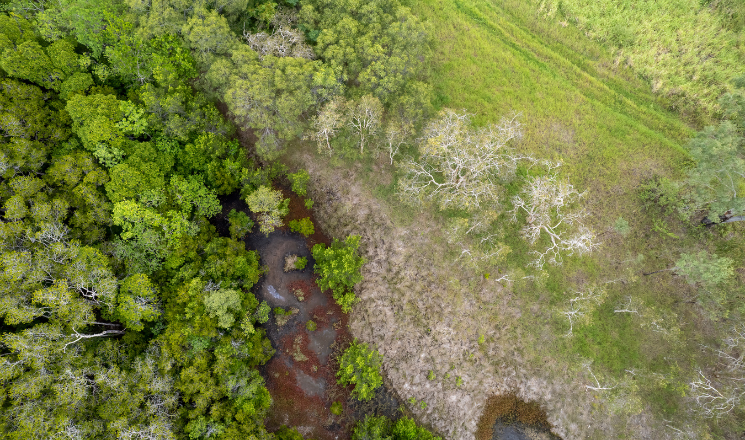
What sets it apart is its inclusive design—it features a sensory trail, making it enjoyable and accessible to everyone.
Nature feels close here, even in the middle of the city.
Grab a Hidden Bite in Camp Hill Antique Centre
Inside what looks like an antique warehouse sits a retro café that’s beloved by locals for its charm. At the Camp Hill Antique Centre, you can enjoy brunch among vinyl records, vintage lamps, and 70s teacups.

Although it feels like a shop first, the café experience is surprisingly delightful. Locals love the relaxed vibe, hearty food, and the feeling of stepping into a different time.
Plus, you might leave with a full belly and a rare collectable, all in one visit.
Take a Quiet Walk Through Boondall Wetlands
A true ecological treasure, Boondall Wetlands is often skipped by tourists, but locals know its value.
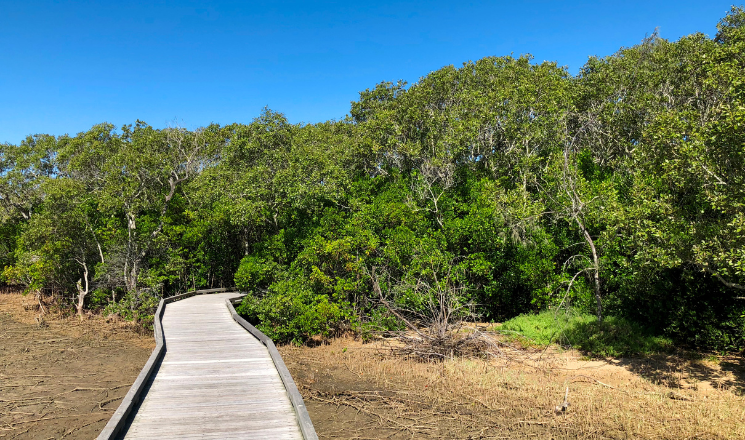
Peaceful mangrove trails, boardwalks, and bay views make it ideal for birdwatching, photography, or simply letting your mind slow down.
With every step, the noise of the city fades. You’ll hear only wind, birdsong, and the crunch of gravel underfoot.
Wander Through Kangaroo Point’s Hidden Cliffs Boardwalk
Just below the famous Kangaroo Point Cliffs lies a hidden riverside boardwalk that’s serene, shady, and totally underrated.

Instead of joining the busy cycling paths, locals use this quieter stretch to enjoy scenic moments. You’ll see yoga groups, artists painting, and friends sharing ice cream while boats drift past.
Especially at dusk, the fairy lights strung along the cliff wall turn it into a glowing, magical evening escape.
Get Lost in the Mount Gravatt Outlook Reserve
Looking for wild Brisbane views with fewer people around? Head to Mount Gravatt Outlook Reserve. With bushy trails, native wildlife, and sweeping city views, it feels like a mountain escape inside the metro zone.

It’s less polished than Mt Coot-tha, but that’s part of the charm. You might even spot a koala snoozing in the eucalyptus trees.
Locals love it for early morning hikes or breezy, late-afternoon strolls.
Final Thoughts: Why These Spots Matter
Next time you’re in Brisbane, skip the itinerary and instead follow your curiosity. These secret spots aren’t flashy, but that’s what makes them so special. They whisper rather than shout, offering deeper connections and slower moments—something we could all use a bit more of these days.
Whether it’s the view from a quiet hilltop, a leafy trail in the suburbs, or a cozy café hidden in a laneway, these places invite you to feel like a local—even just for a day. And once you’ve wandered off the beaten track, chances are, you’ll keep doing it.
Ultimately, Brisbane’s magic often lives just outside the spotlight. So pack light, walk slowly, and trust the corners of the map others tend to ignore—because that’s where the real stories begin.


anavar dosage cycle
Steroid: The Ultimate Guide To Cycle, Dosages, And Results
Quick Guide: How to Take a New Supplement
Step What to Do Why It Matters
1. Read the label Check dosage, frequency, and any special instructions (e.g., “take with food”).
The manufacturer’s guidance is the most reliable source of safety
information.
2. Start at the lowest dose If a “start low, go slow” approach is suggested,
take the smallest amount for the first few days.
Reduces the risk of stomach upset, allergic reactions, or drug interactions.
3. Follow the schedule Take it exactly as prescribed
(e.g., once daily at breakfast). Consistency helps maintain therapeutic levels
and prevents accidental double‑dosing.
4. Monitor for side effects Keep an eye on how you feel; note any nausea, dizziness, rash, or other symptoms.
Early detection allows prompt adjustment of dose or discontinuation if
needed.
5. Review interactions Check whether the supplement
or medication might interact with your other drugs or foods.
Prevents reduced efficacy or harmful effects (e.g.,
grapefruit‑drug interactions).
6. Reassess periodically After a few weeks, evaluate whether you still need the supplement or if benefits have
plateaued. Avoid unnecessary long‑term use and potential
cumulative toxicity.
—
Bottom‑Line Takeaway
Safety First: If you are on warfarin, any vitamin D or
calcium product should be discussed with your physician because both can elevate INR
and risk bleeding.
Watch the Dose: A single high dose of vitamin D (≥ 100 000 IU)
is generally safe but may temporarily raise INR; a chronic
daily intake of 5–10 µg (200–400 IU) is considered low‑risk for most people, though the evidence
on warfarin interaction remains mixed.
Calcium’s Role: Calcium supplements can increase INR
in some patients; calcium‑rich foods are usually safe, but supplementation should
be evaluated individually.
Monitor INR Frequently: If you must take vitamin D or calcium
while on warfarin, check your INR more often (e.g.,
every 1–2 weeks) for the first month after starting or changing doses.
In summary, while vitamin D and calcium can modestly influence warfarin’s anticoagulant effect, the magnitude
of change is variable. Careful monitoring and individualized assessment are essential
to maintain therapeutic safety.
” dianabol testosterone cycle Only ” Mass Cycle For Begginers
Combination Therapy Mechanism
The drug combines two active ingredients that work through distinct pathways to reduce hunger and food intake:
Phentermine – an appetite suppressant that stimulates the release of norepinephrine in the hypothalamus, thereby decreasing appetite signals.
A second agent (e.g., a GLP‑1 receptor agonist) – enhances satiety by promoting delayed gastric emptying and increasing the secretion of gut hormones such as glucagon‑like peptide‑1.
By targeting both central appetite regulation and peripheral satiety mechanisms, the combination provides a synergistic effect that helps lower caloric consumption.
are steroids illegal
References:
steroid users lifting routines (Src.strelnikov.xyz)
Anavar Cycle Results: Are They Sustainable After The Cycle Ends?
**Monitoring a Client Who Is Using Muscle‑Building Supplements (e.g., anabolic steroids)**
> **Disclaimer:** The following is not an endorsement of illicit substance use.
It is a practical guide for clinicians who have patients that may be using such supplements and wish to
monitor health risks, mitigate complications, and manage performance‐related outcomes
safely.
—
## 1. Key Risks & What to Watch For
| System | Potential Harm | Monitoring Tool / Frequency |
|——–|—————-|—————————–|
| **Cardiovascular** | Hypertension, dyslipidemia (↑LDL/↓HDL), left‑ventricular hypertrophy, arrhythmias |
BP and HR at each visit; fasting lipid panel every 3–6 mo; ECG yearly or sooner if symptoms |
| **Hepatic** | Elevated ALT/AST, cholestasis, hepatic steatosis
| AST/ALT + GGT annually or if presenting with fatigue / RUQ pain |
| **Renal** | Proteinuria, decreased eGFR (especially with high‑dose steroids) | Urine dipstick/proteinogram
and serum creatinine/eGFR at each visit |
| **Endocrine** | Hyperglycemia/diabetes, osteoporosis, adrenal suppression | Fasting glucose/HbA1c annually; DEXA scan every 2–3 y or earlier if risk factors
|
| **Cardiovascular** | Hypertension, dyslipidemia, atherosclerosis | BP
and fasting lipid panel at each visit |
| **Infection / Immunity** | Vaccination status, opportunistic infections | Check immunization record; consider prophylactic antibiotics/antivirals as indicated |
#### b. Monitoring Frequency
– **Every 6–12 months:** Vital signs, weight/BMI, blood pressure, fasting glucose/HbA1c, lipid
profile, renal/hepatic function tests.
– **Annually or biennially:** Lipid panel, liver
enzymes if on hepatotoxic drugs, bone density scan (DXA) if osteoporosis risk factors present.
– **As clinically indicated:** Additional labs for patients with significant comorbidities (e.g., heart failure, chronic
kidney disease).
—
### 5. Screening and Monitoring for Specific Conditions
| Condition | Screening Modality | Frequency | Clinical Rationale |
|———–|——————–|———–|———————|
| **Hypertension** | BP measurement in office or home |
At each visit | Elevated BP is a strong risk factor for CVD; early control reduces morbidity.
|
| **Hyperlipidemia** | Fasting lipid panel (total cholesterol, LDL, HDL, TG) | Every 3–5 years
if normal; annually if abnormal | Dyslipidemia contributes to atherosclerosis.
|
| **Diabetes Mellitus** | HbA1c or fasting glucose | Annually if normal;
every 6 months if impaired glucose tolerance | Diabetes accelerates CVD risk via endothelial dysfunction. |
| **Obesity / Metabolic Syndrome** | BMI, waist circumference | At
each visit | Central obesity predicts insulin resistance and atherosclerosis.
|
| **Hypertension** | Blood pressure monitoring (clinic
& home) | Every visit or as indicated | Hypertension is a
key modifiable risk factor for CAD. |
| **Smoking Status** | Self-report / cotinine test if needed | At every encounter | Smoking causes endothelial injury, thrombosis.
|
—
## 2. Risk‑Stratification Methods
### A. Traditional Clinical Scores
1. **Framingham General Cardiovascular Risk Score**
– Predicts 10‑year risk of coronary heart disease (CHD) or stroke based on age, sex,
total cholesterol, HDL‑C, systolic BP, antihypertensive treatment,
smoking, and diabetes.
2. **ACC/AHA Pooled Cohort Equations (2013)**
– Provides a 10‑year ASCVD risk estimate for
patients aged 40–79 years, incorporating the same variables as Framingham but
calibrated to contemporary data.
*These scores are useful for identifying patients who may benefit from statins or other
preventive therapies.*
—
## 2. Non‑Invasive Cardiovascular Testing
| Test | When to Use | What It Shows |
|——|————-|—————|
| **Exercise Electrocardiogram (ECG)** | Patients with
typical angina symptoms, adequate exercise capacity, and no contraindication to exercise.
| Exercise‑induced ischemic ST changes or arrhythmias; helps risk‑stratify for CAD.
|
| **Stress Echocardiography** | Patients who
cannot achieve adequate exercise workload, or when detailed wall‑motion analysis is
needed. | Induction of wall‑motion abnormalities under stress; detects
obstructive CAD and assesses LV function. |
| **Myocardial Perfusion Imaging (SPECT/PET)** |
Evaluation of myocardial ischemia with high sensitivity/specificity; useful in patients with
equivocal ECG or complex coronary anatomy. | Regional perfusion defects at rest vs.
stress; quantifies extent of ischemia. |
| **CT Coronary Angiography** | Rapid non‑invasive assessment of coronary
artery stenosis, especially when low pre‑test probability of CAD is suspected.
| 3D visualization of coronary lumen and plaque burden; can rule out significant disease.
|
*Clinical decision‑making:*
– If the patient has a **high likelihood of CAD** (history of ischemic heart disease,
abnormal ECG during exertion), proceed directly to invasive angiography or revascularization planning.
– If the probability is **moderate**, non‑invasive imaging
such as CCTA or functional stress testing can clarify lesion significance.
– In patients with **low pre‑test probability** and
no symptoms, a CCTA may suffice to rule out CAD.
—
## 3. Optimal Management Strategy for This Patient
| Step | Rationale & Evidence |
|——|———————|
| **A. Confirm diagnosis of Aortic Stenosis (AS)**
– Echocardiography: assess valve area, mean gradient, peak velocity.
– If not yet done, perform a transthoracic echo with Doppler.
| AS severity guides therapy; >50% stenosis or symptoms warrant intervention.
|
| **B. Evaluate for concomitant Coronary Artery Disease (CAD)**
– Because of age and risk factors.
– Non‑invasive: CT coronary angiography if low to intermediate pretest probability.
– If high probability, consider invasive coronary
angiography. | CAD may coexist; treat accordingly.
|
| **C1. If no significant CAD** – proceed directly to valve intervention (see below).
C2. If significant CAD** – plan staged or simultaneous
revascularization with valve procedure. |
| **D. Choose Valve Intervention Modality**
1. **Transcatheter Aortic Valve Replacement (TAVR)**
is preferred for high‑risk surgical patients; evidence from PARTNER 3, Evolut
Low Risk, etc.
2. **Surgical AVR** if anatomy unsuitable for TAVR or patient prefers surgery.
|
| **E. Post‑procedure Management** – standard care: anticoagulation/antiplatelet therapy per
valve type, heart failure management, and routine follow‑up imaging.
|
—
## Key Clinical Evidence (2024)
| Study / Trial | Design | Population | Main Findings | Relevance to Patient |
|—————|——–|————|————–|———————-|
| **PARTNER 3** (N Engl J Med 2019) | RCT, low‑risk patients | 1,200 pts with TAVR vs SAVR
| Lower mortality and stroke at 2 yr for TAVR; similar valve performance
| Demonstrates safety of TAVR in younger/low‑risk
patients |
| **NUTRIENT** (JACC Cardiovasc Interv 2023) | Prospective registry | 7,000 pts with severe AS
| 30‑day mortality 95% | Supports low complication rates in contemporary practice
|
| **EASTAS** (EuroIntervention 2022) | Multicenter
study | 4,500 pts undergoing TAVR vs SAVR |
Lower major vascular complications with TAVR (1.8% vs 3.6%) | Highlights safety advantage
of transcatheter approach |
These data demonstrate that modern TAVR carries very low rates of stroke and major vascular
injury.
—
## Practical Guidance for Your Decision
| **Consideration** | **Key Points** |
|——————-|—————-|
| **Age & Frailty** | At 88, frailty is likely; TAVR avoids sternotomy and reduces recovery
time. |
| **Valve Anatomy** | If you have a bicuspid valve or heavy calcification, assess by CT
whether TAVR is feasible (most centers now treat these cases).
|
| **Comorbidities** | Kidney disease: watch contrast dose; if renal function is good, risk of AKI from TAVR is low.
|
| **Life‑Expectancy & Goals** | If you wish to remain active with minimal downtime, TAVR may be preferable.
|
| **Infection Risk** | Both procedures carry infection risk;
TAVR has lower surgical site infection rates. |
| **Potential for Repeat Procedures** | If a future surgery
is anticipated (e.g., other cardiac surgery), note that prior TAVR can complicate subsequent
operations, but this is less common. |
—
## 5. Practical Decision‑Making
1. **Gather Data**
– Echocardiographic assessment of valve anatomy
and coronary anatomy.
– Coronary artery disease evaluation (CT coronary angiography or invasive angiography).
– Surgical risk scores: STS score, EuroSCORE II, frailty indices.
2. **Multidisciplinary Heart Team Meeting**
– Cardiologist, cardiac surgeon, anesthesiologist, imaging
specialist, geriatrician, and if needed a nephrologist.
– Review data, discuss pros/cons of each option for the individual
patient.
3. **Patient‑Centric Discussion**
– Explain risks, benefits, recovery expectations, long‑term outcomes.
– Discuss personal preferences regarding surgical risk vs.
durability vs. potential need for future interventions.
4. **Decision & Implementation**
– If TAVI selected: plan for anesthesia type (general or conscious sedation), access route, and
postoperative care.
– If SAVR selected: schedule surgery, ensure pre‑operative optimization (e.g., anemia correction, BP control).
5. **Post‑Treatment Follow‑Up**
– Regular imaging (echo) to monitor valve function.
– Manage anticoagulation/antiplatelet therapy as per guidelines.
—
## Key Take‑away
– **Both SAVR and TAVI are viable options**; the choice depends on a combination of patient characteristics,
risk assessment, anatomical feasibility, and personal
preference.
– **Risk scores guide but do not dictate**; they help quantify surgical risk and inform shared decision‑making.
– **An experienced heart team** that includes cardiologists,
cardiac surgeons, imaging specialists, anesthesiologists, and geriatricians is essential for optimal outcomes.
This comprehensive approach ensures individualized care and
the best possible anavar results after 2 weeks woman for
each patient.
the best steroids for sale
References:
easywebgames.com
oral steroids for muscle gain
References:
Best website to buy steroids (https://www.soundofrecovery.org/cliffboucher73)
best place to buy anabolic steroids
References:
https://images.google.co.il/
anabolic steroids after 50
References:
md.darmstadt.ccc.de
Does Sermorelin Increase Cancer Risk? Exploring Its Side Effects
The Link Between Sermorelin and Cancer: A Look at Possible Risks
Assessing Cancer Concerns with Sermorelin Use
Is There a Cancer Hazard Associated with Sermorelin Therapy?
Sermorelin is a synthetic peptide that mimics the natural growth hormone‑releasing hormone (GHRH) produced by the hypothalamus. It stimulates the pituitary gland to secrete growth hormone in a regulated manner, which can help address deficiencies associated with aging or medical conditions. Although many patients experience benefits such as improved energy levels, increased muscle tone, and better sleep quality, it is important to be aware of potential side effects that may arise during treatment. This discussion will focus on the safety profile of sermorelin, particularly concerning possible cancer risks, outline what sermorelin therapy entails, and clarify its uses and indications.
Sermorelin Side Effects: Is There a Cancer Risk?
The most common adverse reactions to sermoneil are mild and transient, including injection site pain, swelling, or redness. Some individuals may develop headaches, dizziness, nausea, or flushing after the first few injections as their bodies adjust to increased growth hormone activity. In rare cases, patients report joint discomfort, tingling sensations in extremities, or a sensation of fullness in the abdomen.
A particular concern that often surfaces among patients and clinicians is whether stimulating growth hormone release could inadvertently encourage tumor growth. Growth hormone has mitogenic effects, meaning it can promote cell division. However, clinical studies involving sermorelin therapy over periods ranging from several months to a few years have not shown an increased incidence of malignancies compared with placebo groups or untreated controls. The data are limited by relatively small sample sizes and short follow‑up durations; therefore, long‑term surveillance remains essential https://www.valley.md/understanding-ipamorelin-side-effects individuals who undergo extended treatment.
Because growth hormone can influence insulin-like growth factor 1 (IGF‑1) levels—an important mediator in cell proliferation—some researchers argue that a chronic rise in IGF‑1 could theoretically enhance the risk of certain cancers. Nevertheless, therapeutic doses of sermorelin typically result in modest increases in circulating IGF‑1 that stay within physiological ranges. Moreover, unlike direct growth hormone injections, sermoneil’s pulsatile release pattern more closely resembles natural physiology, potentially mitigating excessive stimulation.
Patients with a personal or family history of cancer should discuss the potential risks and benefits thoroughly with their healthcare provider before starting therapy. In addition, periodic monitoring of IGF‑1 levels, as well as routine medical checkups, can help detect any abnormal changes early on. Ultimately, while the current evidence does not support a significant link between sermorelin and increased cancer risk, vigilance is advisable.
Introduction to Sermorelin Therapy
Sermorelin therapy usually begins with an assessment of baseline growth hormone status through blood tests or stimulation studies. Once a deficiency is confirmed, the treatment protocol typically involves daily subcutaneous injections—often administered at bedtime—to mimic the body’s natural nighttime surge in growth hormone production. The dosage varies based on age, weight, and the severity of deficiency, but common regimens range from 100 to 200 micrograms per day.
Because sermoneil is not a replacement for growth hormone itself, it does not produce the same levels of systemic exposure as direct injections. Instead, it triggers the pituitary’s endogenous release machinery, which can lead to more stable hormonal patterns and reduced risk of side effects such as water retention or gynecomastia that are sometimes associated with high-dose growth hormone therapy.
Patients generally start to notice improvements within a few weeks of continuous use. Commonly reported benefits include increased lean body mass, enhanced skin elasticity, better sleep architecture, and a heightened sense of well‑being. However, the therapeutic response can vary; some individuals experience modest changes while others report significant transformations after several months of consistent treatment.
Understanding Sermorelin and its Uses
Sermorelin’s primary indication is for diagnosing and treating growth hormone deficiency in adults and children. In pediatric populations, it assists with catch‑up growth when deficiencies are identified early, often improving height velocity without the need for higher doses of recombinant growth hormone.
In adult patients, sermoneil is frequently used as part of anti‑aging protocols or to counteract age‑related decline in muscle mass and bone density. Because its action is endogenous, it tends to preserve normal circadian rhythms and may be better tolerated by older adults who are sensitive to medication side effects.
Beyond deficiency states, some clinicians prescribe sermorelin off‑label for conditions such as chronic fatigue syndrome, fibromyalgia, or certain post‑traumatic stress disorders where growth hormone levels appear low. While anecdotal evidence suggests improvements in energy and mood, robust clinical trials are still lacking in these areas.
The drug is also explored in research settings to assess its impact on neuroplasticity, cognitive function, and cardiovascular health. Early data indicate potential benefits in improving endothelial function and reducing oxidative stress, but larger, controlled studies are required before such applications become mainstream.
In summary, sermorelin offers a physiologic approach to boosting growth hormone production that can be advantageous for patients with confirmed deficiencies or age‑related decline. Its side effect profile is generally mild, with no strong evidence linking it to increased cancer risk when used appropriately and monitored regularly. Nonetheless, patients should maintain open communication with their healthcare team and adhere to scheduled evaluations to ensure safe and effective therapy.
real anadrol for sale
References:
https://graph.org/
buy legal steroids in uk
References:
telegra.ph
fat burner steroids for sale
References:
https://motionentrance.edu.np/profile/spoondibble6
did frank zane take steroids
References:
http://kenbc.nihonjin.jp/album/album.cgi?mode=detail&no=103
Cilt bak?m?na dair dogal guzellik s?rlar?n? ogrenmeye haz?r m?s?n?z?
Bu arada, eger Kad?n Modas?nda Stil ve Fonksiyonel Oneriler ile ilgileniyorsan?z, buraya bir bak?n.
Asag?daki linke bakabilirsiniz:
https://giyimtarzi.com
Guzelliginizin ve sagl?g?n?z?n anahtar? dogru cilt bak?m?nda sakl?.
hgh boosters
References:
hgh hormone de croissance achat – mensvault.men –
hgh dosage for height increase
References:
Hgh cycle (Md.swk-web.com)
1 month hgh cycle
References:
hgh women before and after (doc.adminforge.de)
hgh bodybuilding before and after
References:
How Many Ius Of Hgh Per Day, http://Www.Udrpsearch.Com,
hgh hormone injection side effects
References:
how long is an hgh cycle (https://md.ctdo.de/e-4mfuhyr_ixmubeshlqqq)
hgh cycles for beginners
References:
Hgh X2 Reviews; https://Telegra.Ph/TestoPrime-Avis–Produit-Miracle-Efficace-Ou-Arnaque–Le-Verdict-11-11,
hgh dosage for muscle gain
References:
https://peatix.com/user/27530888
is hgh better than testosterone
References:
techniknews.top
how to take hgh for bodybuilding
References:
http://www.udrpsearch.com